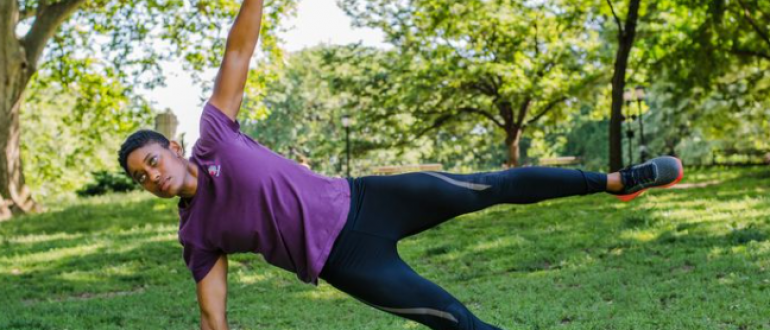There’s a BIG difference between Abs training and Core training. During traditional ab training, your spine is usually *creating* motion in some shape or form.
An example of an abs training is the crunches.

Whereas with core training, the goal is to *resist* motion and keep the spine still, for example the plank.

Abs training primarily targets the Rectus Abdominus, which are your classic “six pack” muscles. It is located at the front of the abdominal wall. While it’s a sign of fitness, you will see that it doesn’t always mean functional strength. The job of this muscle is to lift the upper or the lower body, for example, when we sit up from the bed. What kinds of exercises target the rectus abdominis? Typically, movements when we lift the upper or the lower body such as reverse crunch, sit-up, leg raises, etc. Of course, other muscles are involved, but the abdominals are engaged the most.
Core training works the entire midsection from your deep stabilizers, to your obliques, to your lower back, in a balanced way. So, the core isn’t a single muscle, but a big group of stabilizers. They surround the midsection like a corset or a belt.
These are:
- Rectus and transverse abdominus.
- Internal and external obliques.
- Gluteus maximimus, medius and minimus.
- Multifidus.
- Erector spinae.
- Psoas.
- Pectineus.
- Iliacus.
- Adductors.
- Back, lats, hips

For a comprehensive approach, we recommend incorporating both styles of training into your programming. Abs training is great for isolated strength in your midsection, and, of course, for aesthetic purposes. While core training typically builds up what people refer to as “functional strength” because in everyday life and in your workout sessions, you’re typically required to resist motion at the spine rather than create it.
That’s why core training tends to have a positive reputation in terms of preventing injuries and building resiliency within your spine.
A healthy core leads to:
- Better posture, coordination, stability, and balance.
- Improved body control.
- More powerful power output.
- Decreased risk of injuries while working out or everyday life.
- Better performance in all fields of physical activities.
- More proper execution of exercises.
- More effective breathing.
- Better digestion.
- Lower risk of spine and lower back pain.
What’s the difference between six packs abs and functional core?
Those with a six-pack have a low-fat level, so they have only a thin layer of fat on their tummy. Plus, their abdominal muscles are thickened, so they pop out from the abdomen.
Does such a perfect looking belly mean core strength?
Not necessarily.
A strong core doesn’t always mean perfectly looking midsection. Even a relatively fat guy, who has been wisely doing strength training, can have a far stronger core than a bodybuilder with a six-pack.
Does core workout get you abs?
Getting abdominals is mainly about having a low body fat level, so the muscles of the abdomen get visible. If you have belly fat, you should focus on your diet and do cardio training to burn it. Since the rectus abdominis is the part of the core, if you do core training, it shapes the abs as well. So, the answer is yes.
So it’s important to know the difference, but, ultimately, they both should have a place within a balanced program. Remember, it’s not always about the “six packs” but how you are able to function well in your daily activities. Training smart is key!
source:
https://jasonandlaurenpak.com/
https://fitbodyhome.com/


Comments 0